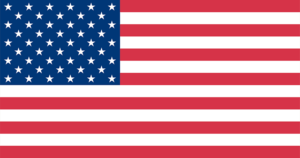During my time here in Kyrgyzstan, I have been interning at the Soros Foundation. The Soros Foundation operates around the world, including in the U.S. though it is known as the Open Society Foundations in other parts of the world. When I applied for my program, we chose whether we wanted to work with human rights and peace building or environment and sustainability. I chose the human rights track and was assigned an internship when I arrived in Bishkek. The Soros Foundation works with a variety of issues including education and youth, governance and accountability, health, rights and justice, and media and information. I am working in the media and information sector with the Freedom of Information Program. My work has mostly been focused on the Encouraging Diversity Through Media Project. This project is focused primarily on the development of media content about the cultural and ethnic diversity of Kyrgyzstan, strengthening the role of Kyrgyz media in constructive inter-ethnic dialogues, and providing improved access to information in different, especially minority, languages. Typically, I arrive at Soros at 2 pm and go over my assignment for the day with my supervisor. I then do my research and put what I find into a file for my supervisors to use in their work. My latest research was used during a training that Soros was involved in for journalists to educate them on how to report in a way that did not escalate conflicts and helped to diffuse them and promote peace instead.
The first project I worked on when I arrived in Kyrgyzstan was regarding the approaching switchover from analog to digital television. My first assignment was proof reading a document that provided recommendations for the promotion of a transparent, inclusive, and timely transition to digital broadcasting that respected the rights of citizens and current broadcasters. I found this very interesting because I can pretty vividly remember when the U.S. transitioned to digital broadcasting and the campaigns that were run on TV and on other forms of media to promote the change. Proofreading this document was also very educational for me because, although I had been through a switchover, I had never really understood the details of why it was happening or even necessary in the first place.
My other project has been researching the best practices for using media in post conflict resolution and to promote peace and diversity. In 2010, there were violent ethnic clashes between the Uzbeks and Kyrgyz in the south of Kyrgyzstan primarily in the cities of Osh and Jalal-Abad. The Soros Foundation has been doing work in different areas to help repair relations between these two ethnic groups. During my second week at my internship I attended a conference that my supervisors were participating in. The conference was titled “Civil Identity: Unity in Diversity. The Role of Media, Government and Society.” The conference had presenters from different NGOs who were working on media projects to promote diversity. These projects included funding local independent stations, running youth groups, and putting out different publications espousing peace. I am possibly the most technologically challenged person I know, so up until this point, I had never really acknowledged the benefits that media programs can have. I have come to find this topic fascinating and I am doing my final research paper for my seminar class here in Kyrgyzstan on it as well. Since I am starting my senior year this fall, I have been thinking more and more about what I am passionate about and what I find interesting and how I can make a living from it. Before this internship, I would have classified working in any sort of media related job as boring and constraining. Because of my experience at Soros, I have realized that there is a very human element to media relations that I find fascinating. It is all about learning how people think and figuring out the best way to reach them. I have no idea what the future has in store for me after I graduate, but I now have a whole new path that I can follow.



